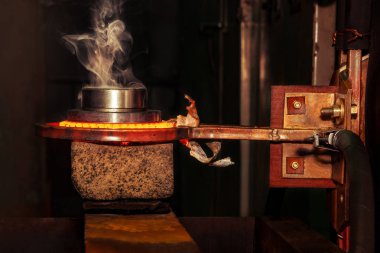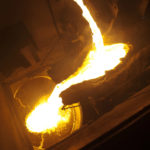As detailed on Wikipedia’s page on “Induction hardening,” induction hardening is a surface hardening method that increases the hardness and brittleness of metal parts through a martensitic transformation induced by heating and quenching. This process is invaluable for selectively hardening specific areas of components without compromising the integrity of the whole part.
Induction heating, the core of this process, utilizes electromagnetic induction to generate heat within the surface layer of a workpiece. By subjecting a conductive material to a strong alternating magnetic field, electric current flows through the material, generating heat. This heat alters the surface layer’s structure, forming a martensitic structure upon quenching, significantly enhancing its hardness.
Induction hardening is a crucial process widely used in industries such as automotive and machinery to enhance the durability and wear resistance of metal components. This technique involves creating a tough core with tensile residual stresses and a hard surface layer with compressive stress, ultimately extending the component’s fatigue life. Low-alloyed medium carbon steels are commonly preferred for critical applications requiring high wear resistance, with factors like hardening depth and residual stress distribution influencing performance.
Click here to learn more about Advanced Technical Products.
Article with all rights reserved, courtesy of wikipedia.org






